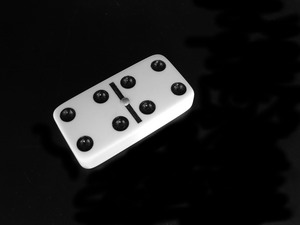Kathleen dragged her feet over applying to graduate school for two years for what her friends insisted was a silly reason. However, before the 47-year-old nonprofit manager even considered an on-campus or online program, she dismissed any school that required results from a recent Graduate Record Exam (GRE). Twenty-five years after earning her undergraduate degree in history, she had no time or stomach for exhaustive prep classes. She was pleasantly surprised, however, to come across an institution that required scores from the Miller Analogies Test (MAT), not the GRE.
Overview of the MAT
A number of graduate schools use the Miller Analogies Test exclusively to evaluate applicants to various academic programs. Developed by Harcourt Assessment, the test is administered by the college admissions testing giant Pearson. It’s is a high-level test that measures an individual’s ability to detect the most relevant pairs of analogies. A very simple example is glove:hand as sock:foot.
According to Test Prep Review, the test contains 120 questions that prospective graduate students must answer within 60 minutes. For each question, the test provides an analogous pair plus four potential matches that might be related to it. Students must select the best match of the four pairs. Of the 120 items on the MAT, 100 are scored. The rest are considered experimental questions included to provide feedback for future tests.
More than 500 controlled locations administer the exam across the globe. Once a student selects a potential testing center through the MAT site, he or she will be able to retrieve information on the fee that location charges. It’s typically $70 to $80 within the United States. Potential additional charges include a rescheduling fee and ordering reports for more graduate schools than those initially specified.
Students who have been out of college for a number of years often find the MAT less intimidating than the GRE because of the way it measures accumulated knowledge.
What’s on the Miller Analogies Test?
According to candidate information on the MAT site, each question on the test addresses two goals. The first is determining a specific type of analogical relation. The second is ascertaining knowledge of a particular subject matter or content area.
The first type of relationship found on the test is semantic. Examples are meaning, synonyms, antonyms, definitions, intensity, contrast and word parts. Classification refers to hierarchy, category, membership and whole or parts. The definition of the association type includes object/characteristic, sequence, order, function, purpose, agent/object and creator/creation. Analogies of the logical/mathematical type cover mathematical equivalence, letter or sound patterns, multiples and negation.
In addition to a general area that includes culture, work, business and life experience, content areas covered by the test are humanities, mathematics, language, social sciences and natural sciences.
The MAT site includes a number of practice tests and general suggestions for taking the test. Some controlled testing centers administer tests completed by hand, on the computer or both types.
Scoring
All tests receive a score between 200 and 600. There is no passing score. Pearson sends the numerical value of a prospective graduate student’s test to the colleges or universities selected prior to testing. Each school has its own criteria as to what’s an acceptable score for admission.
Students also receive a percentage rank (PR). A PR of 68 percent, for example, means that 68 percent of students who took the test received a lower score than numerical score reported for the individual.
Groups such as Mensa that require certain measured intellectual capabilities of all admitted members accept scores from the Miller Analogies Test. For tests administered after 2004, the qualifying PR for Mensa is 95 percent.
Sources:
http://psychcorp.pearsonassessments.com/haiweb/Cultures/en-US/Site/Community/PostSecondary/Products/MAT/mathome.htm
http://www.us.mensa.org/Content/AML/NavigationMenu/Join/SubmitTestScores/QualifyingTestScores/QualifyingScores.htm




